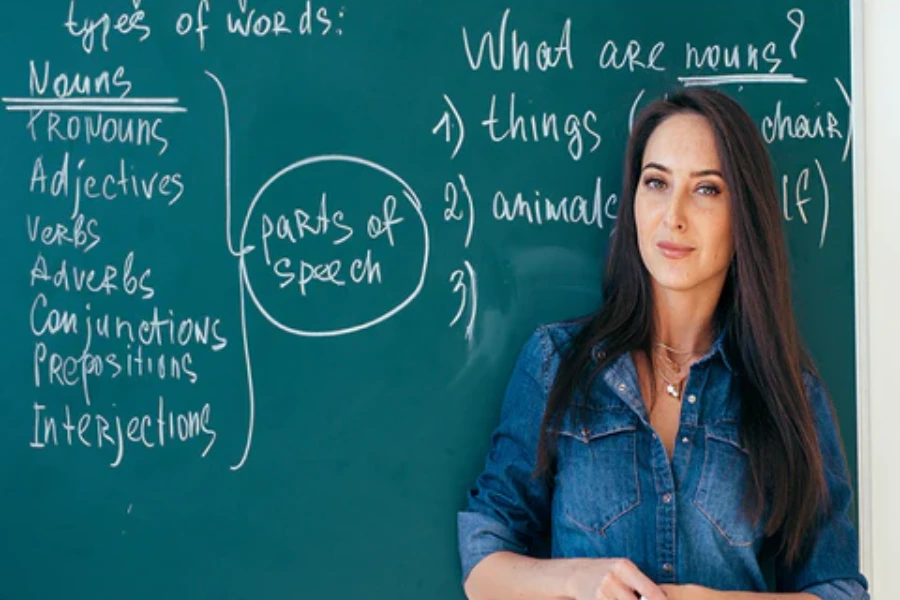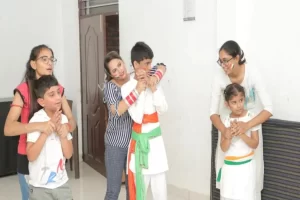
Source: acedtranslation
In the interesting world of English grammar, understanding the shades of Singular and Plural Rules is like opening a key to effective communication. Whether you’re a language student or an experienced writer, knowing these rules can knowingly increase your grip on the language. This blog will guide Primary Teachers through the importance of Singular and Plural Rules, giving light on common confusions and providing hands-on tips.
As we learn about these rules, you’ll find that the changes from singular to plural forms are not always direct, and some exceptions usually catch even native talkers unprepared. Rules aren’t just about adding a’s; they’re about considering the small details that make English such a dynamic and interesting language. Let’s learn about this topic together and major in the art of using singular and plural forms properly.
Regular Nouns: The Simple ‘s’ and ‘es’ Addition
To make it plural the most basic rule for Regular Nouns: The Simple ‘s’ and ‘es’ Addition. For instance, ‘hat changes to ‘cats’, and ‘dog’ changes to ‘dogs’ in plural form. For words that end in – s, x, z, ch, or sh, simply add – ‘es’. For instance, ‘fox’ changes to ‘foxes,’ and ‘witch’ changes to ‘witches’. It’s a clear and straightforward rule but serves as the pillar of Singular and Plural Rules.
Irregular Nouns: When the Usual Rules Don’t Apply
A challenging part for Primary Teachers while Teaching Rules includes- Irregular Nouns: When the Usual Rules Don’t Apply. Certain words like ‘man’ on pluralizing become ‘men’, ‘child’ becomes ‘children’, and ‘tooth’ changes to ‘teeth’. These are Old English origin words that need to be remembered as they don’t follow the usual Rules.
Words Ending in ‘y’: The Vowel and Consonant Play
Another crucial aspect of Singular and Plural Rules is Words Ending in ‘y’: The Vowel and Consonant PlayWhen a noun ends in ‘y’, the way it transforms into a plural form depends on the letter before ‘y’. If it’s a vowel, simply add ‘s’ – ‘key’ becomes ‘keys’. However, if it’s a consonant, change ‘y’ to ‘ies’ – ‘city’ becomes ‘cities’. This rule is a subtle yet important part of Rules.
To join the Grammar Training for Primary Teachers, call +919869866277 / +919869546913.
For your course brochure, click here!

Source: shopify
Words Ending in ‘o’: To ‘es’ or Not to ‘es’
Pluralizing Words Ending in ‘o’: To ‘es’ or Not to ‘es’ is another confusing aspect. For nouns ending in ‘o’, add ‘es’ for some like ‘potato’ to ‘potatoes’ and simply ‘s’ for others like ‘photo’ to ‘photos’. This irregularity makes it one of the most challenging parts for Primary teachers while teaching Rules. Often, it’s a matter of usage and familiarity.
Foreign-Origin Nouns: The Exceptional Cases
English takes many words from foreign languages, usually keeping in mind their actual plural forms. The plural of ‘Cactus’ is ‘cacti’, ‘datum’ is ‘data’, and ‘radius’ is ‘radii’. These Foreign-Origin Nouns: The Exceptional Cases add a layer of complexity to Singular and Plural Rules.
Uncountable Nouns: Singular in Form, Plural in Meaning
Another confusing aspect for children while learning Singular and Plural Rules are words like sugar, furniture, money, etc., which are- Uncountable Nouns: Singular in Form, Plural in Meaning. Primary Teachers must comprehend the usage of these nouns in a context to master Rules.
Compound Nouns: Pluralizing the Key Element
Another aspect of Singular and Plural Rules is Compound Nouns: Pluralizing the Key Element. This suggests that the primary noun changes to the plural form while pluralizing. For instance, ‘brother-in-law’ on pluralizing changes to ‘brothers-in-law’, and ‘passer-by’ changes to ‘passers-by’. An understanding of this helps Primary Teachers teach the application of Rules appropriately.
Number-Specific Nouns: Invariant Regardless of Quantity
Some nouns remain unchanged in both singular and plural forms, such as sheep, deer, and species. These are Number-Specific Nouns: Invariant Regardless of Quantity and require contextual hints to specify their singular or plural usage, an unusual twist in Singular and Plural Rules.
Collective Nouns: Singular Form, Plural Implication
Words like ‘team’, ‘group’, or ‘family’ are singular in form but can imply more than one person or thing. Collective Nouns: Singular Form, Plural Implication usually depends on whether the focus is on the group as a whole or its single member.
Hyphenated and Open Form Words: Pluralizing Each Part
Some words, specially Hyphenated and Open Form Words: Pluralizing Each Part that’s a noun or changes with the number. For instance, ‘mother-in-law’ changes into ‘mothers-in-law’, and ‘attorney general’ changes to ‘attorneys general’.
Mastering Rules in English helps Primary Teachers understand the minute details and irregularities of English, making it an ironic and dynamic language. Regular practice, reading, and speaking can help strengthen these concepts, making your journey with English grammar a more confident and enjoyable one. Whether you’re a student, an expert, or a language supporter, these rules are your friends in the detailed dance of words that is the English language.
To join the Grammar Training for Teachers, call +919869866277 / +919869546913.
For your course brochure, click here!

Source: ebacacademics
Grammar Training for Primary Teachers
Grammar is a necessary foundation of primary education, and the Grammar Training for Primary Teachers provided by Vidhyanidhi Education Society (Govt. regd.) is made to motivate teachers with the skills and information they need to top in teaching this important subject. This blog digs into the numerous features of this Grammar Training for Primary Teachers program, focusing on how it allows Primary Teachers to properly teach grammar lessons in both offline and online situations.
25 Hours of Intensive Training
The Grammar Training for Primary Teachers program spans 25 hours of intensive training. This duration is meticulously planned to cover all the necessary aspects of grammar teaching, ensuring that educators emerge with a thorough understanding and practical skills.
Well-researched and Lucid Course Content
The course material is not only well-researched but also given simply. This makes sure that even complex grammar concepts are broken down into easily digestible parts, helping in better understanding and remembering.
In-depth Theoretical Knowledge for Conceptual Clarity
A significant emphasis is placed on providing in-depth theoretical knowledge. This foundation helps in gaining conceptual clarity, which is crucial for Primary Teachers when explaining grammar concepts and rules like the Rules to young learners.
Effective Grammar Teaching Methodology
The Grammar Training for Primary Teachers at VES introduces various effective teaching methodologies for Primary Teachers. These methodologies are tailored to make grammar teaching more engaging and effective, catering to the diverse learning styles of primary students.
Teaching Videos & Classroom Activities for Each Module
A unique feature of the Grammar Training for Primary Teachers is the inclusion of teaching videos and classroom activities for each module. These resources are particularly beneficial for both offline and online classes, offering practical examples and interactive ways to teach grammar.
Use of Teaching Aids
The Grammar Training for Primary Teachers at VES also trains teachers to create and utilize innovative teaching aids, such as flashcards and creative activities to teach grammar concepts and rules like the Rules. These will help teachers to make grammar lessons more interactive and enjoyable for students.
Worksheet Solving Techniques
Worksheets are a staple in grammar teaching, and this training equips teachers with effective techniques for solving and utilizing worksheets in the classroom.
Expert Trainers
The training is directed by expert mentors who have wide experience and knowledge in the field of grammar education. Their visions and direction are invaluable for Primary Teachers wanting to increase their teaching skills and knowledge.
Flexible Batch Options
Understanding the busy schedules of Primary Teachers, Grammar Training for Primary Teachers offers flexible batch options. This flexibility allows teachers to enroll in the program without disrupting their existing professional commitments.
Interactive Lectures Using Audio-Visual Mediums
The lectures are made to be interactive, using audio-visual modes to make the learning process more interesting and active.
Regular Revision, Doubt Solving, and Regular Feedback
Regular revisions, doubt-solving sessions, and timely feedback form a crucial part of the Grammar Training for Primary Teachers. This approach makes sure that Primary Teachers fully learn the grammar concepts and are well-prepared to teach them.
The Grammar Training for Primary Teachers by Vidhyanidhi Education Society (Govt. regd.) is a complete program that thoroughly trains Primary Teachers to teach grammar and its rules like the Rules successfully. With its focus on hands-on teaching practices, interactive resources, and expert guidance, it stands as an invaluable resource for Primary Teachers aiming to increase their grammar teaching skills and knowledge.
Join Vidhyanidhi’s course, master Singular & Plural Rules – Transform your teaching!
To join the Grammar Training for Primary Teachers, call +919869866277 / +919869546913.
For your course brochure, click here
Singular and Plural Rules
FAQs
Which is The Best Institute for Grammar Training for Primary Teachers?
Vidhyanidhi Education Society (Govt. regd.) is renowned as the best institute for Grammar Training for Primary Teachers.
Can Grammar Training for Primary Teachers be done Online?
Yes, Grammar Training for Primary Teachers can be completed online, offering flexibility and convenience.
How can I start Grammar Classes for Kids?
You can start Grammar Classes for Kids by designing a structured curriculum, incorporating fascinating materials, and understanding child learning styles.



